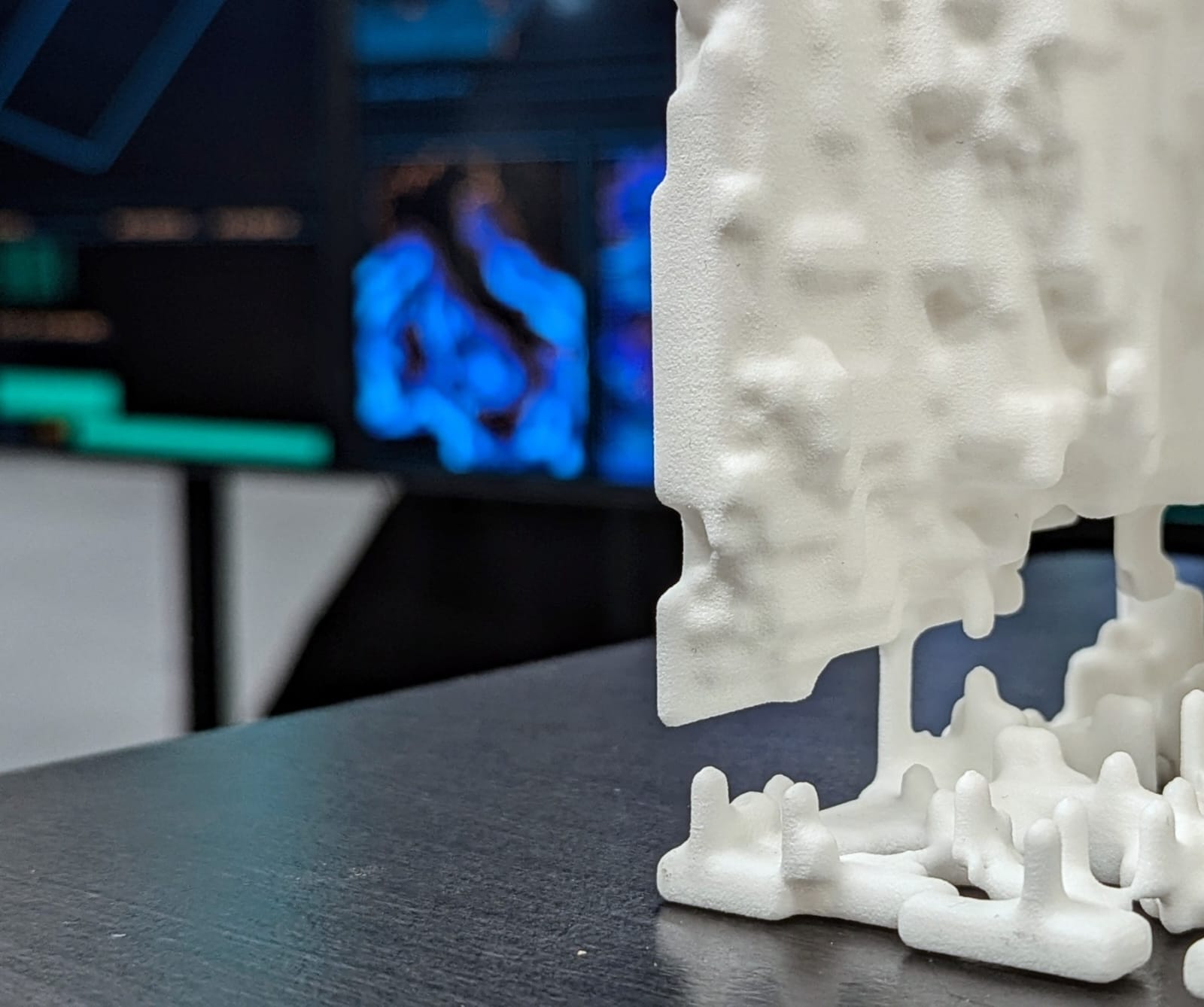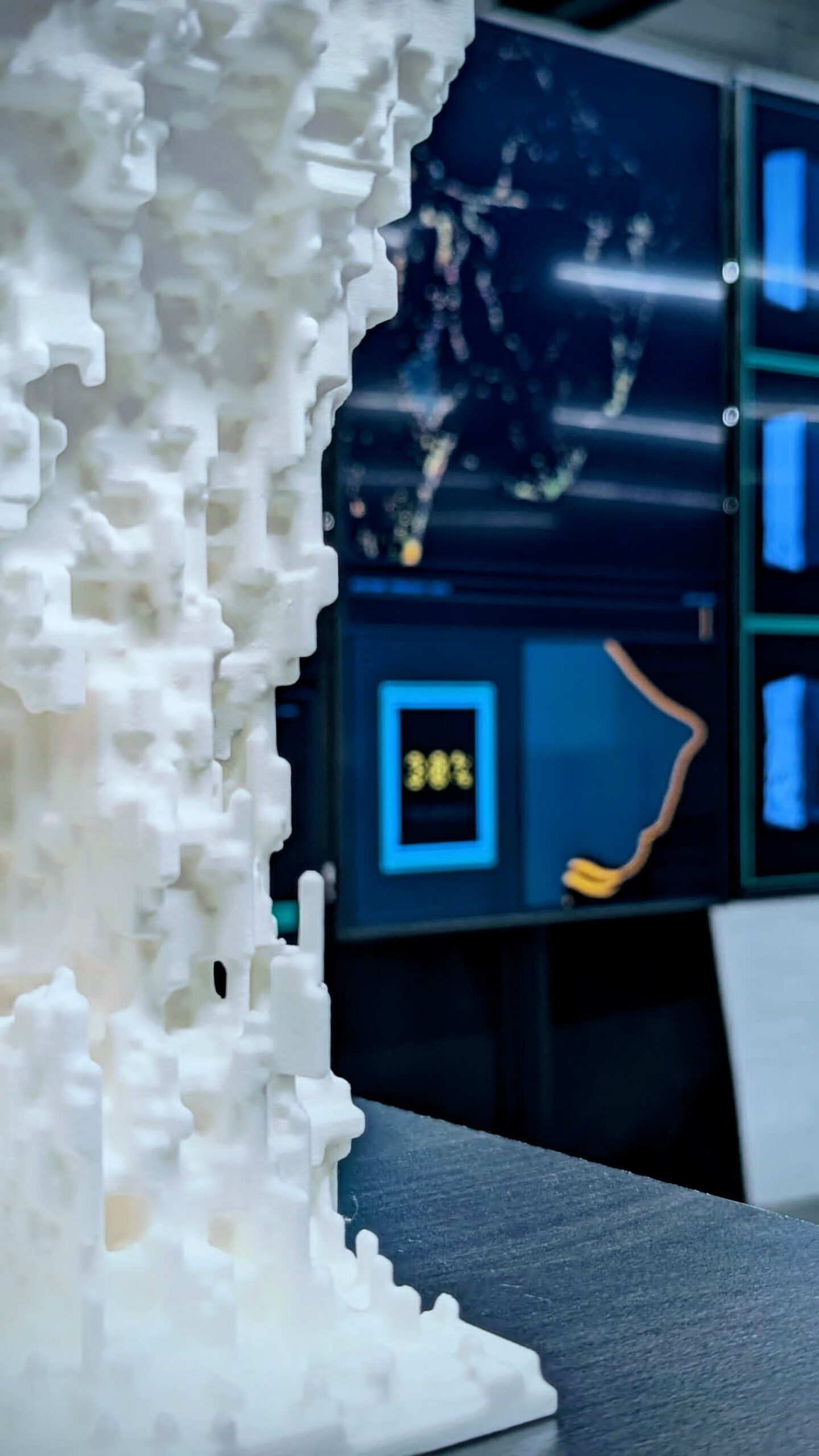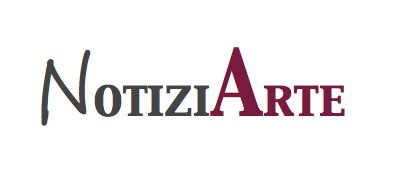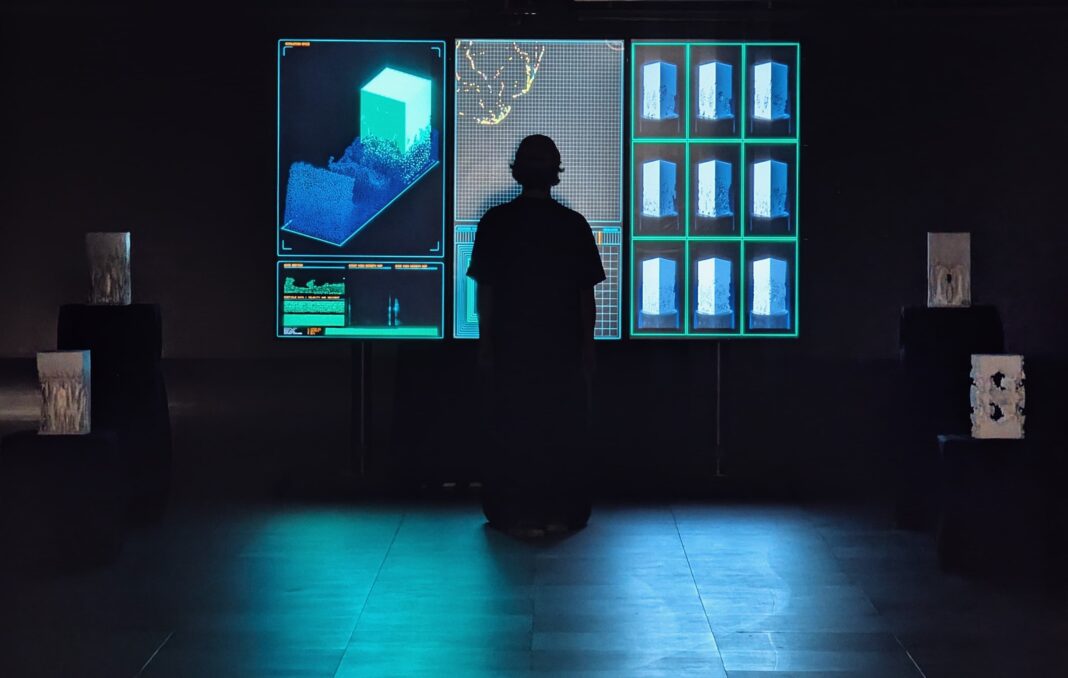Thanks to Artificial Intelligence and the latest technologies, artists can expand their expressive potential, creating works that offer new perspectives on current reality, without ever losing their artistic value and leading us to discover and explore topical issues such as climate crisis. In this direction, the S+T+ARTS GRIN project, represents an important contribution to the dialogue between art, technology and environmental sustainability. CINECA and Kilowatt for the S+T+ARTS GRIN residency project activated a network of collaborations – data scientists, scientists, professors, universities, industry professionals, so that the artists-in-residence could deepen their research focus.
Calins Segal and “Tales from the Receding Edge”
The protagonists of this year’s S+T+ARTS GRIN residency project are Marco Barotti, Salomé Bazin and Calin Segal. We wanted to deepen their work and artistic path with the three artists and here we are with the first interview with Calin Segal. During the residency, Calin Segal has created “Tales from the Receding Edge” – curated by CINECA and Kilowatt and Marco Mancuso – an interactive installation that raises awareness about the erosion of Italy’s coastlines, serving as a warning about the fragility of ecosystems, but also as a tribute to nature’s ability to transform itself.

Calin Segal’s Interview
How do you integrate different artistic, scientific and technological skills in your work?
CS: Technology allows me to infuse life into these ideas, transforming abstract concepts into dynamic, evolving compositions. It’s about discovering the poetry in algorithms, the beauty in mathematical models, and the emotion in digital processes. In my work, integrating artistic, scientific, and technological skills feels like a natural fusion, where each discipline enriches the other. I see them as distinct languages that, when combined, create a more nuanced and layered narrative.
To bring my vision to life, I draw on scientific principles, particularly those inspired by natural and phenomena. But it’s not just about applying science; it’s about reinterpreting these concepts in a way that resonates emotionally and aesthetically. These principles shape the underlying structure of my work, giving me endless sources of inspiration.
Technology has become my medium, my brush and canvas. Using tools like coding, 3D modeling, and digital fabrication, I can manipulate elements of unpredictability within a controlled environment in a way mimic the organic processes of nature.
How do you see the future of art in relation to technology and what role do you think it will play in your art practice?
CS: The relationship between art and technology is a double-edged sword. On one hand, technology offers incredible tools that can transform ideas into experiences that were once unimaginable, pushing the boundaries of interaction, complexity, and immersion in art. This potential for creating dynamic, evolving, and responsive works is something that excites me as I look to the future of my practice.
However, there’s a risk in over-relying on out-of-the-box solutions, which can lead to a standardization of aesthetic output. When we depend too much on pre-made algorithms or software presets, the uniqueness and originality of the artwork can suffer, leading to a homogenization of artistic expression.
In my practice, I’m very conscious of this balance. I strive to use technology in ways that expand the artistic narrative, often going beyond standard tools by creating custom algorithms and exploring unconventional uses of technology. It’s about keeping a spirit of experimentation and ensuring that technology serves the art, not the other way around.
The future of art, I believe, will be defined by how we navigate this balance. Artists who can harness technology’s potential without losing their unique voice will create works that are both innovative and deeply personal. As I move forward, my focus will be on using technology to enhance, rather than dictate, the creative process.
Can you tell us about your project “Tales from The Receding Edge” and how did you turn scientific data on coastal erosion into an art installation?
CS: “Tales from The Receding Edge” explores the dual role of coastal erosion as both a threat and a creator, constantly reshaping landscapes and the lives connected to them. The project uses real-time climate data, particularly from the Copernicus project, to highlight the urgency of understanding and responding to the impacts of climate change on our coastlines.
The transformation of scientific data into art began with a deep dive into climate forecast simulations and digital terrain maps. This data helped identify the areas most at risk from sea level rise and coastal erosion, forming the backbone of the installation. A key feature of the installation is the Time Slider, which allows users to explore how coastlines have changed and are projected to change over time. Combined with data overlays and position sliders, it provides an interactive and engaging way to visualize the erosion process.
This forecast data is then fed into a real-time simulation that drives the creation of 3D-printed sculptures, which are central to the project. These sculptures start as solid forms representing the total landmass of each region, and as the simulation runs, portions of the sculptures are removed in direct proportion to the predicted land loss. This creates a tangible, visual representation of coastal erosion, transforming abstract data into something viewers can see and feel.
By merging scientific data with artistic expression, “Tales from The Receding Edge” creates a compelling narrative that draws attention to the ongoing and future challenges of coastal erosion, encouraging viewers to reflect on our relationship with the natural world and the pressing need for action.

You collaborated with scientists and researchers to develop this work: how important was this exchange of knowledge to the final result?
CS: The collaboration was crucial. Regular brainstorming sessions with scientists provided invaluable insights into the climate data, ensuring the project’s scientific accuracy. But beyond that, the exchange of knowledge brought a depth and authenticity to the work that would have been impossible to achieve on my own.
Being immersed in an environment where I could constantly interact with experts allowed for a continuous flow of ideas. These interactions not only refined the technical aspects of the project but also enriched the creative process, helping to shape the narrative and overall impact of the installation. The collaboration ensured that the final result was not just scientifically sound but also emotionally resonant and meaningful.
What are your reflections from this experience for the GRIN S+T+ARTS Residency Project?
This residency had a profound impact on me, particularly in how I approach storytelling and the conveyance of complex information. Collaborating with scientists and being immersed in a research-driven environment underscored the importance of accuracy and depth. But more importantly, it showed me how data can be transformed into a narrative that’s not just informative but also emotionally engaging.
The experience has also reshaped my understanding of art’s role in addressing urgent global issues like climate change. It reinforced the idea that art is not just a medium for expression, but a powerful tool for communication and education. I now approach my work with a deeper awareness of how art can narrate information in a way that resonates on both an intellectual and emotional level, making complex issues more accessible and impactful for a wider audience.
How did you experience it-both humanly and in terms of skills-while working 3 months at the VisitLab graphic visualization lab of the Cineca HPC department?
CS: What really stood out during my time at CINECA was being immersed in a vibrant scientific environment. Being surrounded by experts in computer science was incredibly inspiring. Everyday moments, like casual chats over coffee or spontaneous debates, often sparked new ideas and directions for the project. These interactions were not just informative but deeply collaborative, leading to a continuous exchange of knowledge that enriched the work.
In terms of skills, working at VisitLab allowed me to deepen my technical expertise, particularly in areas like data visualization and real-time simulation. But beyond the technical growth, the human experience—connecting with others who are passionate about their fields—was equally impactful. This blend of scientific rigor and creative exploration made the final installation both technically robust and artistically dynamic.

How can the public interact with your installation and what impact do you “Tales from The Receding Edge” will have on understanding climate Change?
CS: What I find most powerful about “Tales from The Receding Edge” is how it invites people to engage with the installation in deeply personal ways. Tools like the Time Slider and data overlays allow visitors to explore specific regions—whether it’s their hometown, a favorite holiday destination, or places they’ve always been curious about. This personal connection transforms abstract data into something immediate and tangible.
At the G7 exhibition, I saw how people naturally gravitated towards areas that held personal significance for them. Some were drawn to coastlines they knew well, while others explored regions that sparked their curiosity. It was in these moments that the reality of climate change truly resonated. Seeing their own connections to these places made the issue feel more urgent and real.
I’m not as focused on whether people fully grasp every scientific detail; what matters to me is that they feel something—whether it’s concern, curiosity, or even a sense of loss. I hope the installation helps people realize that climate change is not a distant problem but something that affects all of us, in places that are deeply meaningful to our lives. By creating a space where the data is accessible yet open to personal interpretation, I aim for “Tales from The Receding Edge” to foster a deeper emotional connection to the issue, encouraging reflection and, ultimately, action.
How does your art practice and the “Tales from The Receding Edge” project reflect your ecological thinking?
CS: For me, nature has never been a romanticized ideal but rather a complex blueprint filled with possibilities. This blueprint offers valuable insights into natural engineering principles, which I continually explore and integrate into my work. Through the GRIN S+T+ARTS Residency, I’ve been able to delve deeper into this ongoing research, particularly focusing on nature-inspired generative systems.
My work in generative art is profoundly influenced by organic processes. I see these natural patterns as foundations upon which I can build systems and methodologies for artistic self-expression. There’s something incredibly captivating about the moment when you press play for the first time and witness your creation come to life—it’s as if you’re tapping into the same forces that drive the natural world.
Do you think art can profoundly influence people’s perceptions and actions regarding environmental issues? In what ways? What role can artists play in training an ecological imagination?
CS: Artists have a vital role in cultivating an ecological imagination through worldbuilding and creating meaning. Worldbuilding allows artists to construct immersive environments and narratives that bring abstract ecological concepts to life. Instead of just presenting scientific data, artists can create entire ecosystems within their work, enabling people to explore the intricate connections within nature in a way that feels real and engaging. These imagined worlds make it easier for audiences to understand the complexities of environmental issues and see their immediate relevance.
Creating meaning is just as important. Artists have the ability to take complex ideas and infuse them with emotional and cultural significance. By weaving stories that resonate personally with audiences, they transform ecological concerns from distant, abstract issues into something that feels urgent and close to home. This approach helps people develop a deeper connection with the environment, fostering empathy and a sense of responsibility.
What are your upcoming projects?
CS: I’m energized by several projects on the horizon that delve deeper into the intricate interplay between art, science, and technology. One particularly intriguing project, still in its conceptual phase, explores the cellular growth patterns in insect wings as a source of inspiration. I’m fascinated by how these natural processes can be translated into virtual environments to “grow” sculptures. This project draws heavily on the sophisticated modeling techniques I honed during my time at CINECA, leveraging high-performance computing to replicate the intricate, yet functionally optimized, systems that nature so elegantly employs. The goal is to create forms that are not only aesthetically complex but also embody the inherent efficiency of their natural counterparts.
Another ambitious project I’m currently developing is titled “Economy of Rage,” which is part of the “New European Digital Deal” residency. In this work, I’m employing a similarly systemic approach to dissect the mechanics of propaganda within today’s media landscape. By mapping out the intricate networks and strategies used to manipulate public perception, I aim to craft a piece that both visualizes these undercurrents and challenges viewers to critically engage with the ways information is consumed and weaponized in the digital age.
These projects reflect my ongoing commitment to exploring how art can illuminate and interact with the complex systems that underpin both the natural world and contemporary society. I’m eager to see how these ideas will continue to unfold and shape my practice.
What goals do you have for the future of your art career and what themes would you like to explore?
CS: Looking ahead, my goal is to deepen my engagement with the intersection of art, science, and technology, using these fields to uncover new ways of understanding and interacting with the world around us.
In terms of themes, I’m eager to delve further into the exploration of complex systems—whether found in nature, society, or the digital realm. I’m fascinated by the hidden patterns and processes that govern these systems and how they can be translated into compelling visual narratives. I also want to explore the relationship between technology and the environment, particularly how digital tools can both illuminate and impact our understanding of ecological sustainability.
Artist bio: Calin Segal
Born in Romania 1992. Segal Calin was born in Galati, Romania, and is currently based in Paris, France. His work as a computational artist has a distinct emphasis on generative systems. His academic journey began at the Ecole Speciale Architecture in Paris. Here, he delved into robotic manufacturing and digital design. While initially inclined toward architecture, he pivoted towards a self-guided career in interactive and generative art. He co-founded the In-Dialog research studio to explore the intersection of art and technology. His skill set spans design, craftsmanship, coding, and 3D modeling. His creations are defined by their balance between calculated systems and organic unpredictability that leverage intricate mathematical models and algorithms. Despite being at the beginning of his career, Calin has already had a series of defining projects such as the “Digital Mental Transposition” pavilion for Nuit Blanche Paris 2018, “Path to Heaven” exhibited at the Enric Miralles Foundation in 2020, “Planet LEV” presented at Madrid’s LEV – Matadero festival in 2021 and “Binary deconstruction” presented at Geneva Mapping Festival 2022. Recently, he has been a part of renowned residencies such as V2 in Rotterdam for RIT, S+T+ARTS GRIN, S+T+ARTS VOJEXT, CYENS – Centre in Cyprus and New European digital deal organized by Arts Electronica.



